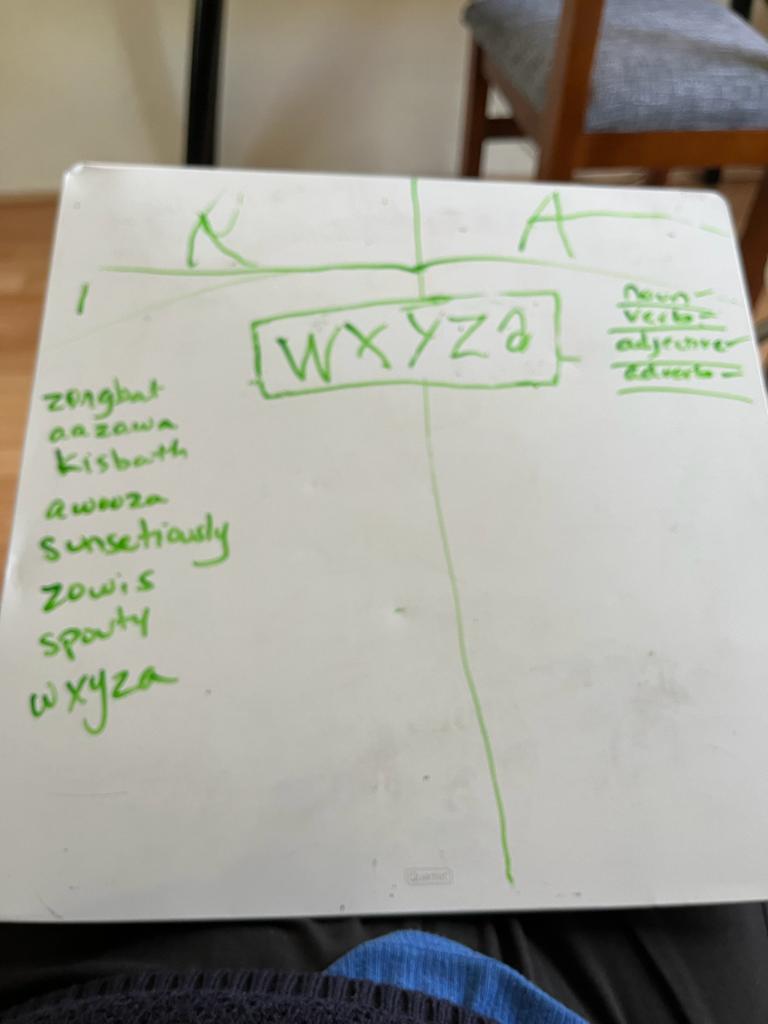Homeschooling is an incredible journey that allows for our kids to follow their passions and interests while learning and skill-building along the way. As homeschooling parents, we tend to foster interests and skills that fit within our comfort zone and look for packaged curriculum to help with topics that are outside our wheelhouse.
Writing can slip through the cracks. Writing isn’t something that can be taught by a curriculum alone. It’s a form of communication and self-expression. It’s an art and skill. And something that always requires a clear purpose.
When kids think writing means answering questions or filling out a worksheet, they tend to focus more on how tired they are or how uncomfortable their hand feels. It tends to turn into a struggle rather than a fun time.
As homeschooling parents, we can make learning writing fun and interesting. Even something as simple as parts of speech can become an opportunity for creativity, laughs, and strengthening your connection to your child.
Here are 5 games you can play with your child to help them understand, remember, and practice using the parts of speech.
1. Madlibs
Maybe you remember playing MadLibs as a kid. The sillier the response, the better, right? But only as long as you stick to the part of speech. You can find free versions of MadLibs online, print it out, buy it, or write your own version.
Playing MadLibs is a great way to unwind and let your kids see your goofy or gross side.
This game is especially wonderful for kids who struggle to write letters or feel easily overwhelmed or frustrated when asked to write longer assignments. It’s also a fantastic way to get an emergent reader reading independently.
Some suggestions for silly body parts: elbow, toenail, belly button, armpit…you get the idea.
2. Describe Something
One way to practice working with adjectives, nouns, and word order is to choose something to describe out loud.
If you have a few people, you can go around the circle and each person adds an adjective to the list. If you want to make it a memory game, everyone has to keep track of all of the adjectives that have been used to describe the [chair]. If not, one person can write down what’s been said so far.
The point is to say the list of adjectives in the correct order before ending with the noun. This may sound hard, but we’re really used to the order of adjectives so it will sound funny if out of order.
If you only have 2 or 3 people playing, you can change the game and one person can list adjectives to describe something in the room and the other person has to guess what the object is.
3. Add a Word
Another game that doesn’t require any writing is Add a Word. You can play this with 2 or more people.
One person says a word and the next person adds on another word. This continues until someone says “period” to end the sentence. You can leave it at one sentence, or you can keep going and try to create a story.
Here’s an example:
Person 1: The
Person 2: fish
Person 3: went
Person 1: to
Person 2: the
Person 3: store
Person 1: to
Person 2: buy
Person 3: some
Person 1: toilet
Person 2: brushes
Person 3: to
Person 1: use
Person 2: to
Person 3: clean
Person 1: the
Person 2: giant’s
Person 3: teeth
Person 1: period
Without naming the parts of speech, players must use their knowledge of grammar and syntax to create coherent sentences. This game is fantastic for kids who aren’t yet reading and writing. And it’s a fantastic way to foster focusing and listening skills among older kids.
I’d love to know the wackiest sentence your family creates!
4. Narrator

There are a few different ways to play this one, but here’s a version that emphasizes parts of speech.
This is a great way for kids to practice parts of speech. Write the structure to follow on a board or piece of paper that everyone can see: (Article adjective noun verb adverb) or for younger kids you can write: (The adjective person/animal/thing verb adverb).
One person is the narrator. The narrator says the sentence out loud while the other person acts it out.
The next turn someone else is the narrator and a different person acts it out. This way everyone can have several opportunities to play both roles.
If you’d like, you can add a writing component to the game. Give each player several strips of paper and ask them to write one sentence on each strip that follows the structure above. The narrator can choose a sentence from a hat to read out loud while the other person acts it out, OR one person can choose a sentence from a hat and act it out while the other players guess what the sentence is.
5. Invent a Word
Invent a Word is 100% fiction. This game works best with a large piece of paper or a dry erase board. Write the different parts of speech in the corner for reference. Each player has to come up with at least one word for each part of speech and have the most points in order to win.
Here’s how to play:
Take turns so only one player takes a turn at a time. The player has to invent a word. It absolutely can not be a real word. They write the word on the board. They have to say the following:
1. The word 2. The part of speech 3. The definition 4. Use the word in a sentence (optional)

If the player can get through saying ALL of the above without laughing, they get a point. Once they are finished, the next person takes a turn. Keep taking turns until everyone has had a chance to make up a word for each part of speech.
Warning: This is an incredibly silly game and you may end up with a high score of 0-2.
Almost all of these games are collaborative rather than competitive, so please keep these in mind when siblings need practice working together and supporting one another. <3
I’d love to know how it goes if you try any of these games with your homeschooler – let me know in the comments which game was the biggest hit with your family!
Kids learn so much when we make it fun! Enjoy!

Afsaneh has been an educator for over 20 years. She has taught students from preschool to graduate school and now homeschools her own child and coaches homeschooling families in how to teach their children based on individual learning styles, interests, needs, and connection so that the whole family can thrive. She is also the author of the picture books series Jamie is Jamie.


